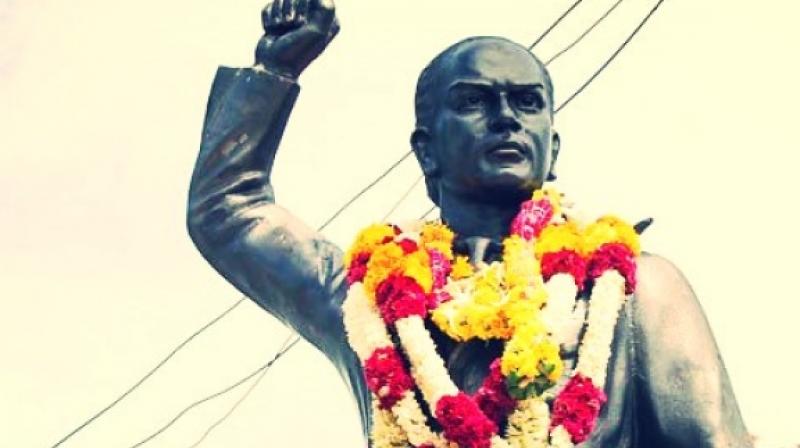Bid to malign Vanchinathan kicks up row in Nellai dt

Tirunelveli: Was Vanchinathan a casteiest and not a freedom fighter? Did he shoot Robert William D'escourt Ashe not for the love of his country? Many youths are now confused as a few Dalit outfits and Tamil nationalist groups have attempted to defame Vanchinathan by hailing English collector Ashe as a humanist.
Dalit outfits including the Viduthalai Chiruthaigal Katchi paid floral tributes to the then Tirunelveli district collector Robert William D'escourt Ashe at his burial site inside the English church at Palayamkottai in Tirunelveli on his 108th memorial day on Monday.
According to K G Kalaikannan, Tirunelveli district secretary of the Athi Tamilar Peravai, they did this to defy the general belief that Vanchinatha Iyer is a freedom fighter and to help people understand the real reason for Vanchinatha Iyer murdering Ashe.
In Kalaikannan's version, “Vanchinatha Iyer was exasperated by Ashe's wife, Mary Lillian Patterson who helped a pregnant outcaste woman who was in need of immediate medical treatment to pass through the agraharam. He killed Ashe to protect the Brahminical set-up.”
This version is a fraud created by a priest Ravikumar Stephen, according to P Ramanathan, president of the Vanchi Makkal Iyakkam. “In his message of reconciliation to Harihara Subramanian, son of Vanchinathan's younger brother through e-mail on June 18, 2011, Robert William D'escourt Ashe's grandson, Robert W D E Ashe, referred to Vanchinathan as an idealist political campaigner whose zeal for the freedom of his country sent Robert (Ashe) to his early grave. This clearly established that Ashe was shot dead by Veeran Vanchinathan to free India and not for any other personally motivated reason,” argued the president of Vanchi Makkal Iyakkam.
Prof M Sivasubramaniam, a noted personality among leftist parties in the southern districts who has written an elaborate history of Ashe murder spoke to DC and said that as a historian, he did not want to take sides. “My book on Ashe's murder and on the Indian freedom struggle in the southern districts was written based on government documents, police records and the trial process of the case. None of these records created by the then British government officials has any note to state that Vanchinathan had a caste motive to kill the British officer,” said Prof Sivasubramaniam, who added that the Ashe murder trial was handled by three judges ,Charles Arnold White, Justice Ayling and an Indian judge C Sankaran Nair. They concluded in their final judgment, “The murder of Mr Ashe was a direct consequence of his (Ashe's) conduct at Tuticorin with reference to the Coral mill strike on February 27, 1908 and the conviction of Subramania Siva and Chidambaram Pillai.” The judges are said to have mentioned that Ashe's activities as the sub-collector in Tuticorin to destabilize the Swadeshi Steam Navigation Company was one of the main causes of the murder.”
Referring to the two columns written by Ayothidasa Pandithar, the forerunner of Dalit activism in Tamil Nadu in his journal “Tamilan” on the murder of Collector Ashe's by Vanchinathan, Prof Sivasubramanian said that though Ayothidas took a strong stand against Vanchinathan and the Swadeshi movement in his columns, he did not mention a word about the story now being propagated by some activists to belittle “Veeran” Vanchinathan.

